Upside Down Nuthatches

Nuthatch takes a drink
Photo Credit – Author
Recently, I have enjoyed Nuthatches visiting my bird feeder and bird bath. Sometimes they are Pygmy Nuthatches; occasionally, they are the Red-breasted type, but so far, none have been White-breasted Nuthatches. These three varieties are native to California. The other North American Nuthatch is the Brown-headed Nuthatch, which has a restricted territory in the southeastern United States and the Caribbean.
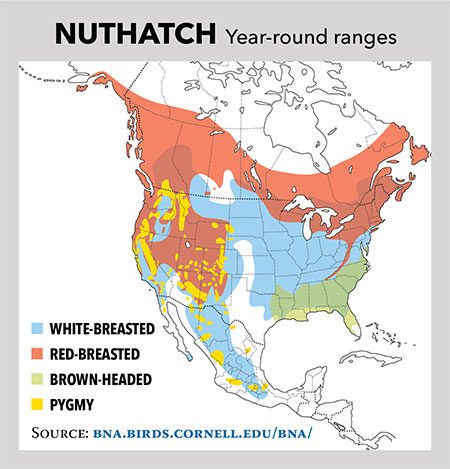
The word Nuthatch is derived from nuthacker, which reflects how the bird opens nuts for food. It jams the shell into a crevice and then hammers it to break it open. Worldwide, there are 24 different species of Nuthatch, with the Eurasian Nuthatch, which I first saw in the 1960s, having the widest global distribution. My sighting was at Spurn Point in Yorkshire, and is featured in Chapter 9 of my novel, She Wore a Yellow Dress. It was probably on the move south, possibly a juvenile bird. Most Nuthatches are sedentary.

Eurasian Nuthatch Range (Green = Resident)
Photo Credit – Wikipedia
California’s Nuthatches are small, plump birds with straight, sharp bills, a short neck and tail, and approximately 4 to 5 inches in length. They peep or squeak as they fly. Each species adopts a different method of survival for the cold winter months. The White-breasted Nuthatch survives by thronging together and sharing food. Red-breasted Nuthatches migrate to lower elevations with a more abundant food supply during cold weather. Pygmy Nuthatches act sociably and crowd together in tree holes to survive the chilly nights. Brown-headed Nuthatches in the southeastern United States use pieces of bark to remove bark from trees, which provides access to food that they would otherwise miss.
Nuthatches are unusual birds in that they forage by walking headfirst down the trunks of trees and walking upside down along branches, using their strong legs and enlarged hind toes. This ability allows them to see food that they would otherwise miss. The Nuthatch diet consists of fruit, nuts, seeds, and insects, either obtained naturally or supplemented with garden suet and seed feeders. Individual birds may eat the seed or take it away to hide for future consumption.
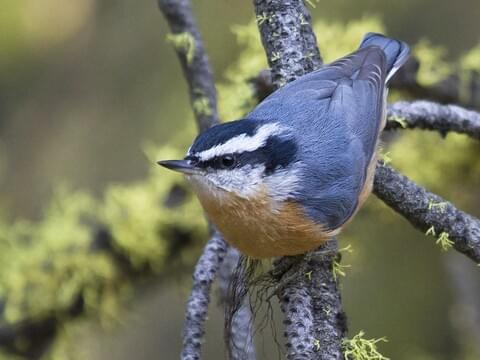
Red-breasted Nuthatch
Photo Credit – Cornell Lab of Ornithology

White-breasted Nuthatch
Photo Credit – Cornell Lab of Ornithology
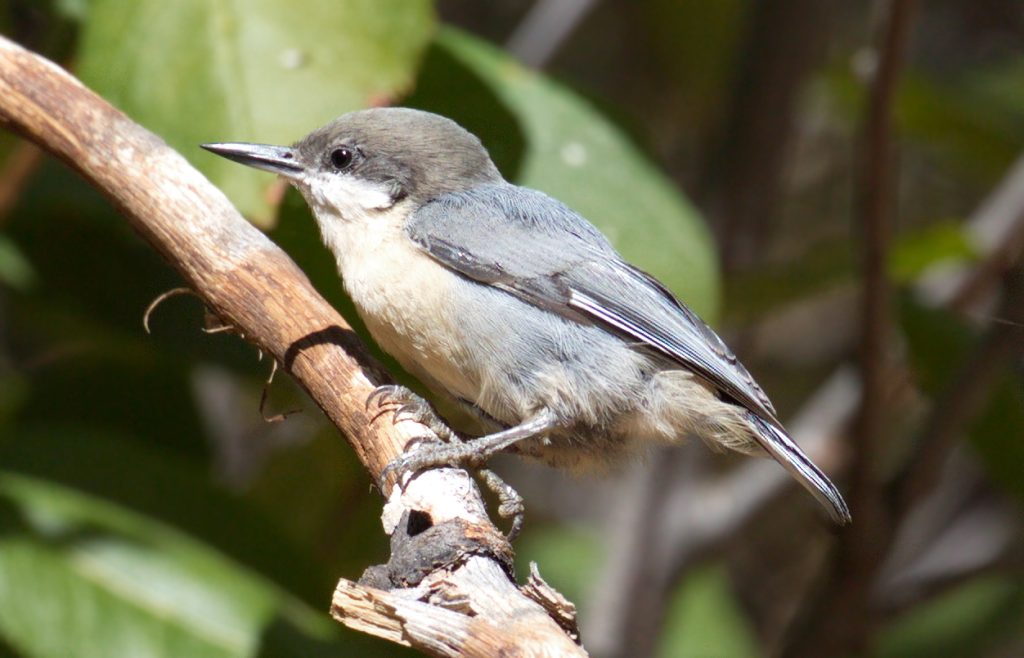
Pygmy Nuthatch
Photo Credit – San Diego Bird Spot
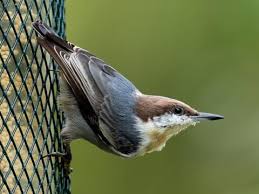
Brown-headed Nuthatch
Photo Credit – Cornell Lab of Ornithology
Nuthatch species are relatively easy to distinguish due to their unique facial patterns. White feathers surround the eye of the White-breasted Nuthatch; the Red-breasted Nuthatch has a conspicuous black stripe through the eye with white above and below; the Pygmy Nuthatch has a dark brown cap that extends to just below the eye, and there is no white touching the eye. The Brown-headed Nuthatch has white below the eye, grey above, and a brown head.
Nuthatch populations appear stable with an estimated 18 million Red-breasted Nuthatches, 9.2 million White-breasted, 2.3 million Pygmy Nuthatches, and 1.5 million Brown-headed. Their average lifespan is 2 to 4 years, with ages up to 10 years recorded.
Nuthatches are monogamous and cavity nesters. The male provides the food to the female while she incubates the eggs. The Red-breasted Nuthatch usually excavates its breeding cavity, whereas other species often use abandoned woodpecker holes. Both parents care for the young, and most pairs remain in the vicinity of their nesting territory throughout the year. A typical clutch would have 5 to 9 eggs. The Red-breasted Nuthatch protects its nest by smearing a ring of toxic resin around its entrance to deter pests and predators. It flies straight into the nest to avoid touching the edge of the opening. The White-breasted Nuthatch smears blister beetles at the entrance that give off a foul smell.
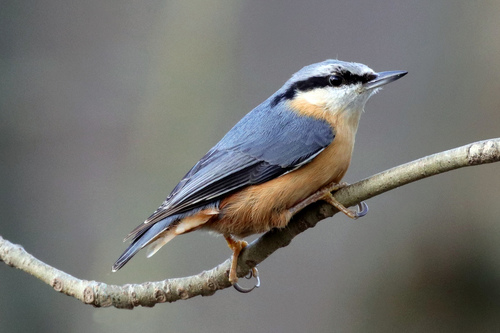
Eurasian Nuthatch
Photo Credit – iNaturalist
When I visit England, I am much more likely to see the Eurasian Nuthatch than when I was growing up in the 1950s. Back then, birdwatchers occasionally spotted them around York, especially near Castle Howard; however, they are now much more common. Friends in Nottingham, with whom I sometimes stay, have a Nuthatch that regularly visits their bird feeder. The species is by far the most numerous of all Nuthatches, common throughout its range, and with a global population estimated to be between 50 and 230 million. In the UK, estimates suggest there are about 250,000 breeding pairs. Numbers have increased by 250 per cent since the 1970s, likely due to greater nesting success and the availability of food in gardens and parks.
Other species of Nuthatches exist worldwide, some of which are restricted to small areas, such as the island of Corsica in Europe. In contrast, others occupy a wider range across parts of Asia, the Middle East, Turkey, Georgia, Russia, and Algeria. In summary, Nuthatches are an amusing family of birds that are often overlooked in their woodland habitat but usually entertain when they appear in public.



